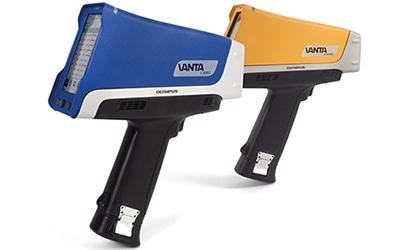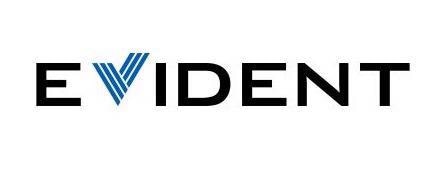The FAQs below provide answers to questions received by customers asking about Vanta™ handheld XRF analyzers.

Image Credit: Evident Corporation
Why Do People Use XRF?
The elemental composition of materials (magnesium and heavier on the periodic table) can be obtained with the X-ray fluorescence (XRF) technique. For some alloys, results are ready in as little as 1 second and for some geological samples in up to 60 seconds, both with little sample preparation. XRF is also nondestructive.
Why Did Evident Make the Vanta Analyzer?
The Vanta analyzer was released in September 2016 to replace the DELTA™ XRF analyzer, as this was 7 years old. Over those 7 years, XRF technology had progressed immensely, and there were many things that could be improved, so the Vanta analyzer was created.
Can the Vanta Analyzer Stand Up to Demanding Jobs?
The Vanta analyzer is built to withstand the rigors of daily use in tough environments. It passed a 4-foot (MIL-STD 810-G) drop test, is IP55 or IP54 rated (depending on the model), operates continuously from −10 °C to 50 °C (14 °F to 122 °F) with an optional fan, and has a solid detector shutter (on models with a silicon drift detector). The analyzer even comes with a standard 3-year warranty.
Are There Any Other Noteworthy Improvements?
There are three more important advancements: the Axon Technology™ which powers the analyzer; a “smartphone-like” user interface; and the option for wireless connectivity.
What is Axon Technology?
Evident’ Axon Technology is a series of signal processing improvements in the Vanta analyzer. This technology provides extremely high count rates with excellent resolution, making Vanta analyzers very good at counting X-rays. This means that better results can be obtained faster.
What Does the Wireless Connectivity Option Offer?
You can access the Evident Corporation Cloud™ (OSC) using a Vanta analyzer with wireless connectivity. The OSC alerts you to any new software updates, downloads the file, and updates the instrument wirelessly.
You can also use the OSC to store data, remotely view data, share screens, and locate analyzers in your fleet. New OSC features are being added all the time.
What Makes the Vanta Analyzer’s User Interface so Intuitive?
The swiping, flicking, and tapping navigation interface was inspired by today’s smartphones. The Vanta analyzer has a big screen so lots of information can be displayed, and you can customize the features that appear on the home screen. A Vanta analyzer is as easy to set up as a smartphone.
Why Are There Several Different Vanta Analyzers Available?
There are four Vanta analyzer models, each offering a different level of performance—the M Series, C Series, L Series, and the Vanta Element™. There are also three anode materials available:
- Rhodium: excellent for alloy applications
- Tungsten: ideal for regulatory applications
- Silver: a good all-around performer
To determine the best combination of model and anode material for a specific application, it is best to talk to a sales representative.
What Applications are Vanta Analyzers Used for?
There is a wide range of applications. In manufacturing, customers use the Vanta analyzer to identify the alloys in incoming material and then to confirm that the alloy is as the certificate says it is. They can also be used to spot-check manufactured components to ensure that the correct alloy was used.
In the scrap recycling industry, different types of scrap can be identified using analyzers. Geoscientists also use them at every stage of the mining process from exploration to site remediation.
Vanta analyzers can also be used to:
- Identify precious metals
- Test for RoHS (restriction of hazardous substances)
- Check environmental samples or consumer products for hazardous substances
- Measure coating thickness
- Sort precious metals in car catalysts
- Support archaeology
- Analyze road construction materials

This information has been sourced, reviewed and adapted from materials provided by Evident Corporation.
For more information on this source, please visit https://www.evidentscientific.com/en/